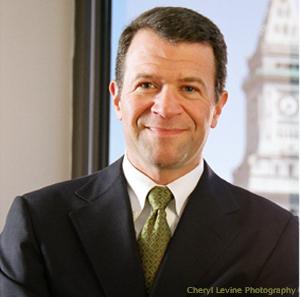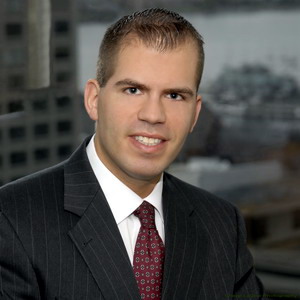MDL Asbestos Judge Holds Navy Ship Not A “Product” Under Strict Liability Law
By admin on October 18, 2012
Guest bloggers David M. Governo and Corey M. Dennis are attorneys at Governo Law Firm in Boston, where they focus on the defense of toxic tort, product liability, environmental, and insurance coverage claims. Mr. Governo is the immediate past Chairman of the Toxic Tort and Environmental Law Section of the Federation of Defense & Corporate Counsel (FDCC).
Earlier this month, Judge Robreno of the U.S. District Court of the Eastern District of Pennsylvania, who presides over the federal Asbestos Products Liability Litigation consolidated Multidistrict Litigation docket (MDL 875), considered an issue of first impression under maritime law in Mack v. General Electric Company, MDL-875, No. 2:10-78940-ER, 2012 WL 4717918 (E.D. Pa. Oct. 3, 2012): whether a Navy ship is a “product” under strict product liability law.
The defendants were Navy ship builders—General Dynamics, Northrop Grumman Shipbuilding, and Todd Pacific Shipyards—who moved for summary judgment on the ground that a Navy ship is not a product for which strict product liability applies and that the sophisticated user defense relieved them of liability. Judge Robreno agreed that a Navy ship is not a “product” for purposes of strict product liability law, reasoning that: (1) the role of a Navy ship builder is “more like a provider of a service” than “a manufacturer or supplier of a product”; and (2) imposing liability on a Navy shipbuilder for thousands of products would be an undue burden likely to discourage shipbuilding. He concluded, therefore, that the manufacturers of the various asbestos-containing products aboard the ships, rather than the ship builders, should “bear the burden of preventing harm” to Navy seamen.
Judge Robreno also adopted the “sophisticated user” defense under maritime law, which relieves a product manufacturer of its duty to warn end users who are “sophisticated” regarding the hazards of the product by virtue of their training, education, or employment. However, he rejected the defendants’ argument that the Navy’s sophistication regarding asbestos discharged their duty to warn the plaintiff, finding that the lack of evidence of the seaman plaintiff’s sophistication was fatal to the defense.
Judge Robreno limited the applicability of the sophisticated user defense under maritime law, concluding that the defense only applies: (1) to negligent failure to warn claims; and (2) where the end user himself (e.g., Navy seaman) was a sophisticated user of the product. As a result, the defendants’ motions for summary judgment were granted as to the plaintiff’s strict liability claims, but denied as to the plaintiff’s negligent failure to warn claims.
While not binding precedent, the Mack decision represents persuasive authority that Navy ship builders may rely on to establish that they should not be held liable, at least under strict liability, for Navy ships. However, Judge Robreno’s ruling on the sophisticated user defense, the applicability of which varies greatly by jurisdiction, is less helpful for defendants. Although he adopted the sophisticated user defense under maritime law, under his interpretation, the sophisticated user defense is very limited.
This ruling is at odds with the laws of some states, including Massachusetts. See Carrel v. Nat’l Cord & Braid Corp., 447 Mass. 431, 441 (2006) (adopting sophisticated user doctrine as a defense to claims of negligent failure to warn and failure to warn under breach of warranty, as pertaining to end users or intermediaries); Taylor v. Am. Chemistry Council, 576 F.3d 16, 25 (1st Cir. 2009) (explaining sophisticated user defense applies to end users or intermediate parties, such as employers).

 New York’s appellate courts continue to hold toxic tort plaintiffs and their experts to rigorous standards when it comes to proof of causation. To escape an adverse summary judgment ruling, it is not enough for a plaintiff to merely allege, with the support of an expert, that she was exposed to a toxic substance, and that this exposure resulted in the illness alleged. Rather, the plaintiff must raise a triable issue of fact as to her “exposure to a specific toxin or allergen; quantify the level of exposure to some degree; and posit that such level of exposure was sufficient to produce the alleged injuries.” Such was the holding of the Appellate Division, First Department, in
New York’s appellate courts continue to hold toxic tort plaintiffs and their experts to rigorous standards when it comes to proof of causation. To escape an adverse summary judgment ruling, it is not enough for a plaintiff to merely allege, with the support of an expert, that she was exposed to a toxic substance, and that this exposure resulted in the illness alleged. Rather, the plaintiff must raise a triable issue of fact as to her “exposure to a specific toxin or allergen; quantify the level of exposure to some degree; and posit that such level of exposure was sufficient to produce the alleged injuries.” Such was the holding of the Appellate Division, First Department, in  Motors (“Hassel”), alleging that Sean’s mother, Debra, was exposed to gasoline fumes in the family’s BMW during her pregancy, which resulted in Sean being born with birth defects.
Motors (“Hassel”), alleging that Sean’s mother, Debra, was exposed to gasoline fumes in the family’s BMW during her pregancy, which resulted in Sean being born with birth defects.  attempt (with mixed success) to use evidence of OSHA regulations to establish the duty owed by the defendants in those cases. Courts around the country differ considerably on the admissibility of OSHA standards in personal injury cases to establish a standard of care.
attempt (with mixed success) to use evidence of OSHA regulations to establish the duty owed by the defendants in those cases. Courts around the country differ considerably on the admissibility of OSHA standards in personal injury cases to establish a standard of care. In the majority of jurisdictions, to establish a claim for design defect in a product liability action, the plaintiff must present some proof of a “feasible alternative design” or “reasonable alternative design.”
In the majority of jurisdictions, to establish a claim for design defect in a product liability action, the plaintiff must present some proof of a “feasible alternative design” or “reasonable alternative design.”  When governmental or quasi-governmental agencies formulate a chemical risk assessment, it is part of their legitimate exercise of public health, policy-oriented regulation. Regulators often develop risk assessments due to scientific uncertainty concerning the toxicity of a particular compound and utilize conservative risk models in the interest of protecting public health and the environment. Thus, when a substance is labeled “possibly carcinogenic” or even “probably carcinogenic” by an agency, it may have little or no bearing on general and specific causation issues.
When governmental or quasi-governmental agencies formulate a chemical risk assessment, it is part of their legitimate exercise of public health, policy-oriented regulation. Regulators often develop risk assessments due to scientific uncertainty concerning the toxicity of a particular compound and utilize conservative risk models in the interest of protecting public health and the environment. Thus, when a substance is labeled “possibly carcinogenic” or even “probably carcinogenic” by an agency, it may have little or no bearing on general and specific causation issues. on Cancer ("IARC"), which is part of the World Health Organization ("WHO"), has classified low-level radiation from cell phones as "possibly carcinogenic to humans" based on limited evidence linking cell phone use to glioma, a type of brain cancer. Although Consumer Reports concluded in its article that IARC’s action was based on "limited evidence" and doesn’t "convincingly" link typical cell phone use with cancer, an American public that often skims only headlines of articles, may be susceptible to appeals of sympathy by plaintiff lawyers representing long-time cell phone users with brain cancers. Throughout the 1980’s the utility industry battled spurious claims, premised upon junk science, that electromagnetic field radiation was responsible for "cancer clusters" of child leukemias and other dreaded diseases. Although virtually every major EMF toxic tort claim was successfully defended by industry over a period of years, tens of millions of dollars was spent defending these lawsuits, which were brought in courts all across the country. As in the case of low dose radiation from cell phone use, there were millions of millions of potential plaintiffs in the EMF cases and all of the prospective utility industry defendants had deep pockets. Following issuance of the IARC release, a spokeswoman for the Federal Communications Commission ("FCC") stated that FCC currently requires that all cell phones meet safety standards based upon the advice of federal health and safety agencies. Moreover, according to the National Cancer Institute’s Surveillance Epidemiology and End Results Program ("SEER"), the incidence of brain cancer in the United States has actually declined over recent years as cell phone use has skyrocketed. Despite these reassuring pronouncements, well-heeled plaintiff lawyers may bring some cases as trial balloons to test industry resolve based upon other equally ambiguous pronouncements, such as the contention that cell phone use can affect "brain function". As in the cases brought against chemical manufacturers in the 1980’s, which alleged that chemicals cause generic "immune system dysfunction", enterprising plaintiffs may attribute any number of injuries to purported "brain function" impacts. Hopefully, courts will continue to exercise their gatekeeper roles to maintain some semblance of scientific rigor in the courtroom to exclude inconclusive science if these cases are brought.
on Cancer ("IARC"), which is part of the World Health Organization ("WHO"), has classified low-level radiation from cell phones as "possibly carcinogenic to humans" based on limited evidence linking cell phone use to glioma, a type of brain cancer. Although Consumer Reports concluded in its article that IARC’s action was based on "limited evidence" and doesn’t "convincingly" link typical cell phone use with cancer, an American public that often skims only headlines of articles, may be susceptible to appeals of sympathy by plaintiff lawyers representing long-time cell phone users with brain cancers. Throughout the 1980’s the utility industry battled spurious claims, premised upon junk science, that electromagnetic field radiation was responsible for "cancer clusters" of child leukemias and other dreaded diseases. Although virtually every major EMF toxic tort claim was successfully defended by industry over a period of years, tens of millions of dollars was spent defending these lawsuits, which were brought in courts all across the country. As in the case of low dose radiation from cell phone use, there were millions of millions of potential plaintiffs in the EMF cases and all of the prospective utility industry defendants had deep pockets. Following issuance of the IARC release, a spokeswoman for the Federal Communications Commission ("FCC") stated that FCC currently requires that all cell phones meet safety standards based upon the advice of federal health and safety agencies. Moreover, according to the National Cancer Institute’s Surveillance Epidemiology and End Results Program ("SEER"), the incidence of brain cancer in the United States has actually declined over recent years as cell phone use has skyrocketed. Despite these reassuring pronouncements, well-heeled plaintiff lawyers may bring some cases as trial balloons to test industry resolve based upon other equally ambiguous pronouncements, such as the contention that cell phone use can affect "brain function". As in the cases brought against chemical manufacturers in the 1980’s, which alleged that chemicals cause generic "immune system dysfunction", enterprising plaintiffs may attribute any number of injuries to purported "brain function" impacts. Hopefully, courts will continue to exercise their gatekeeper roles to maintain some semblance of scientific rigor in the courtroom to exclude inconclusive science if these cases are brought. 

 , Louisiana, which had been used for oilfield pipe and equipment cleaning operations for over forty years. Although class certification was rejected on multiple grounds, the decision relied in large part upon the Louisiana Supreme Court’s landmark decision in
, Louisiana, which had been used for oilfield pipe and equipment cleaning operations for over forty years. Although class certification was rejected on multiple grounds, the decision relied in large part upon the Louisiana Supreme Court’s landmark decision in